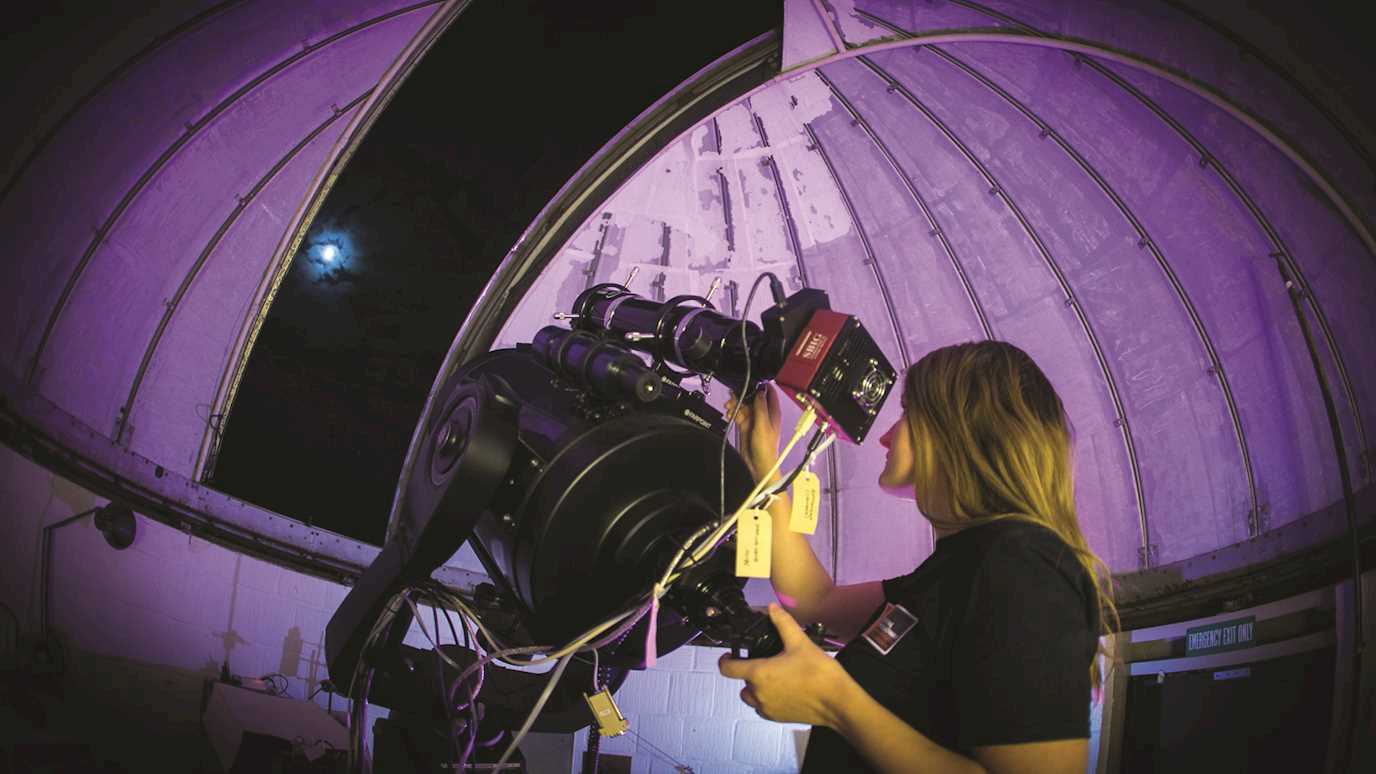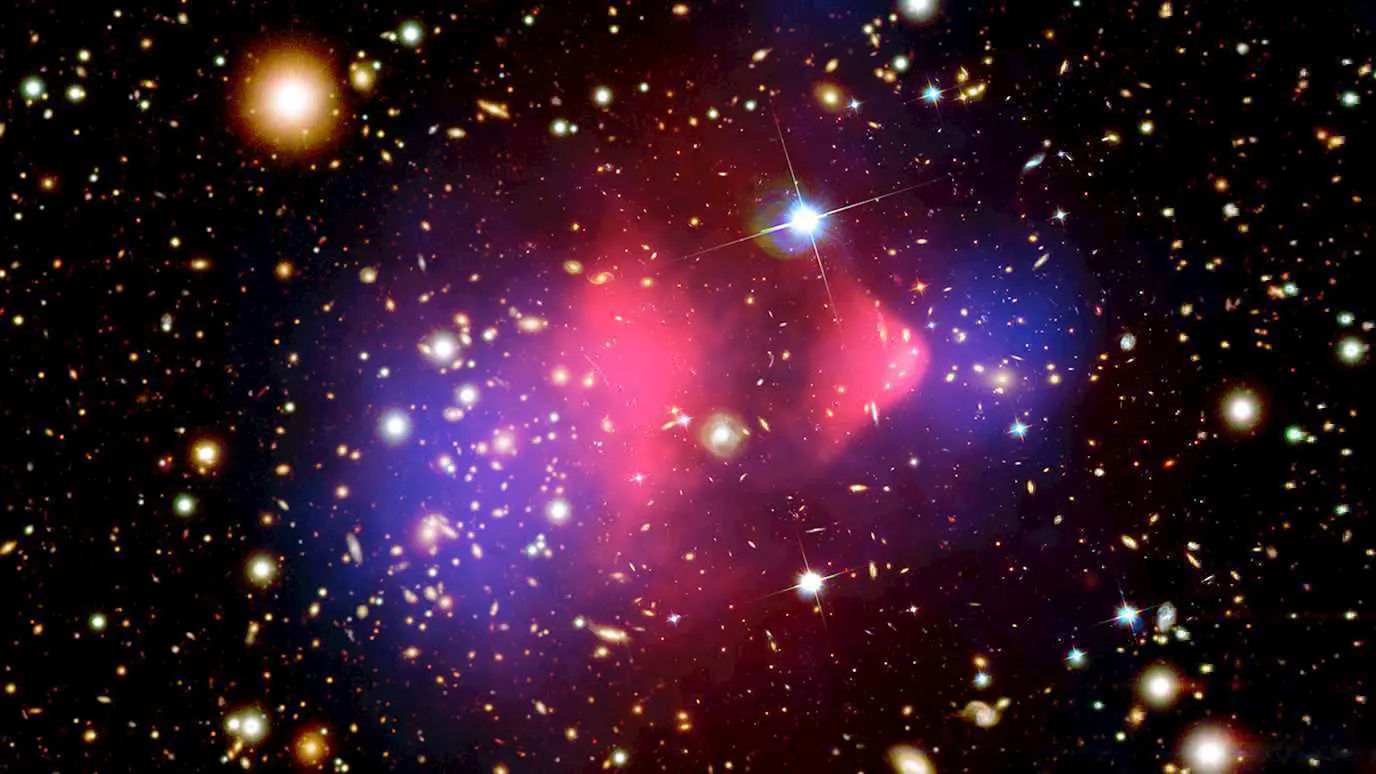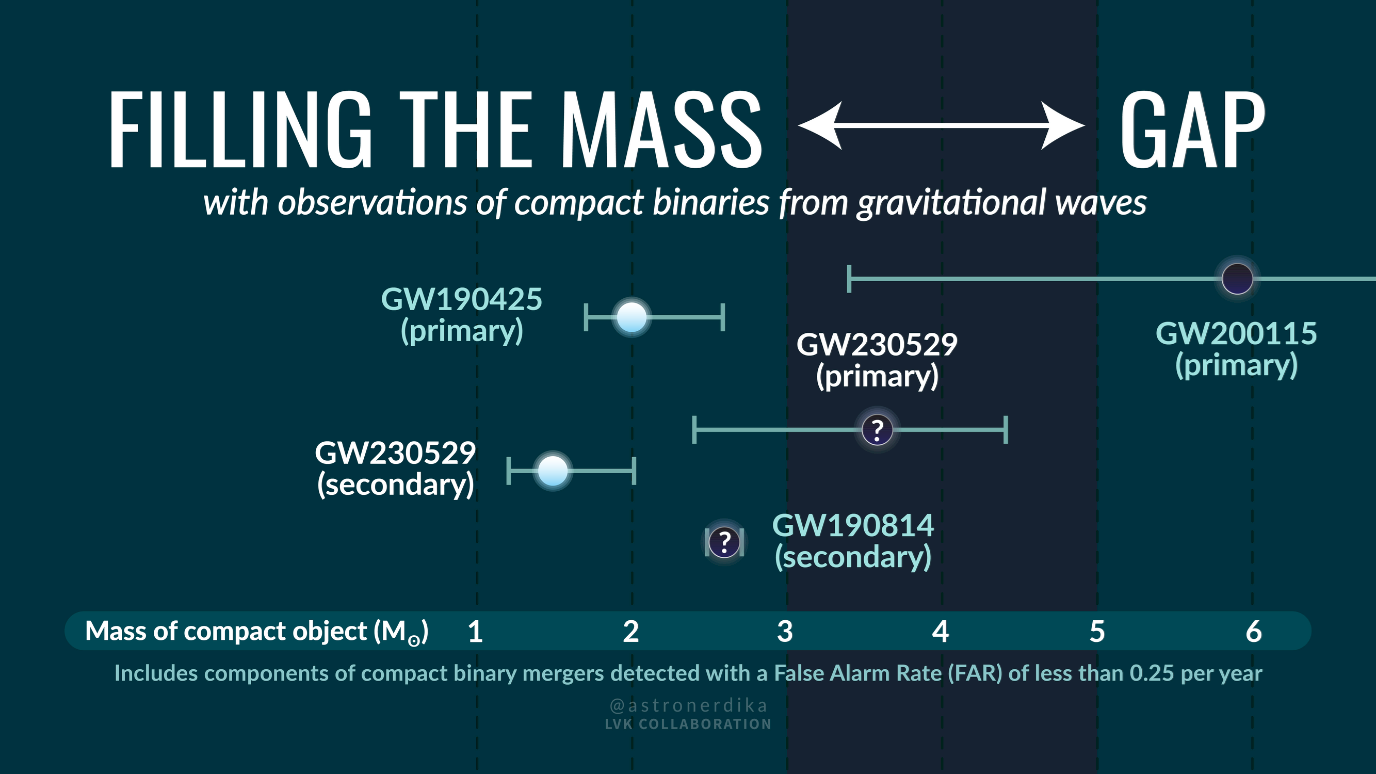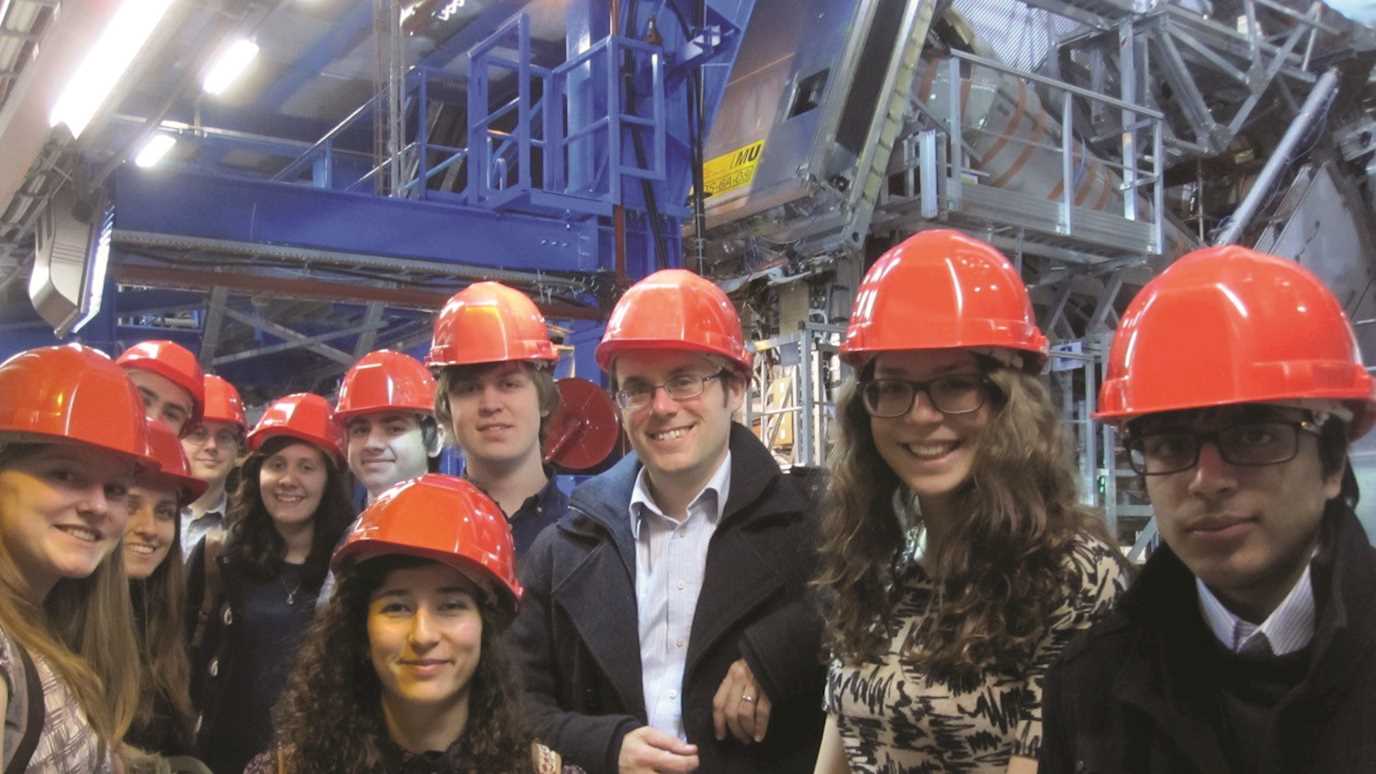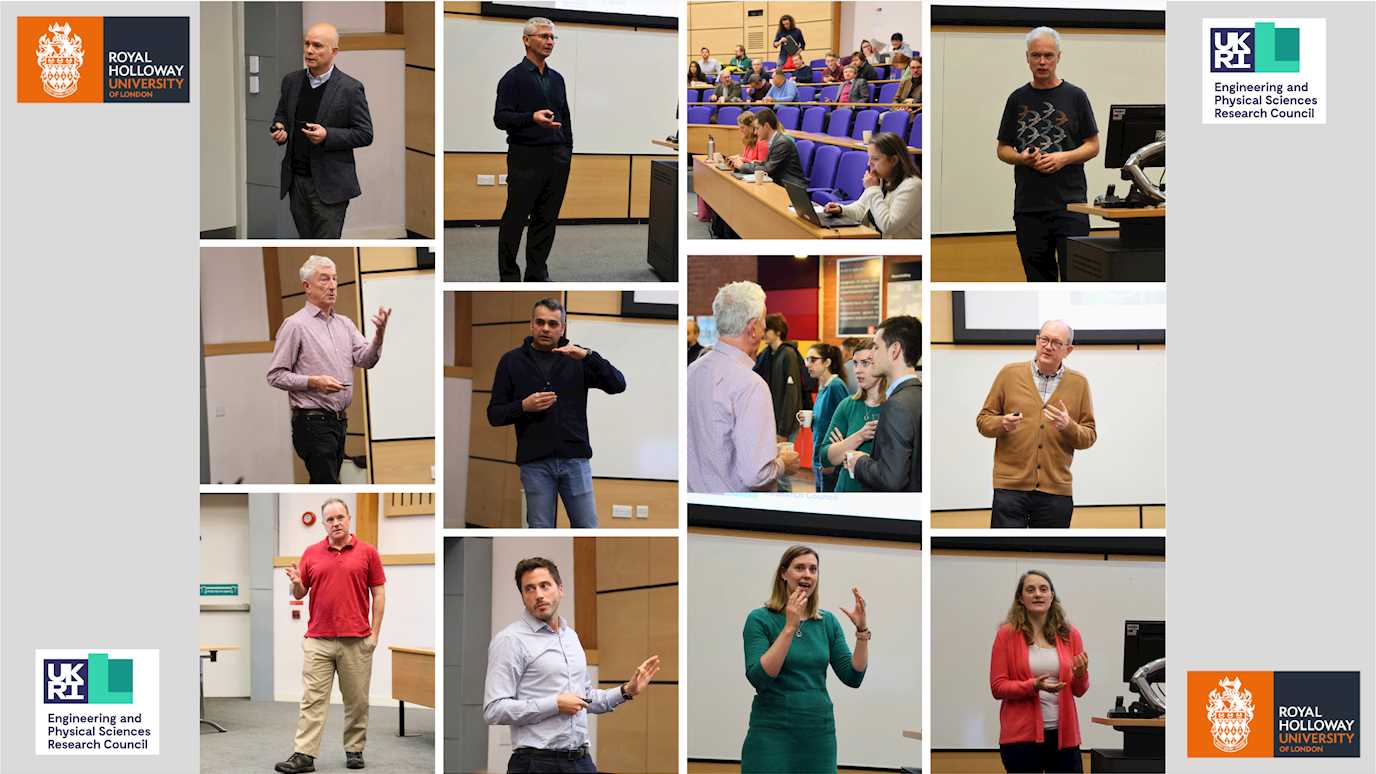“The Universe is over thirteen billion years old and consists of hundreds of billions of galaxies, each containing hundreds of billions of stars. Over the past 2000 years, our understanding of the Universe has greatly improved: from having the Earth at its centre to having no centre at all! However, in the last 80 years, it has become apparent that we understand less than 5% of the Universe – the other 95% being made up of mysterious dark matter and dark energy.”
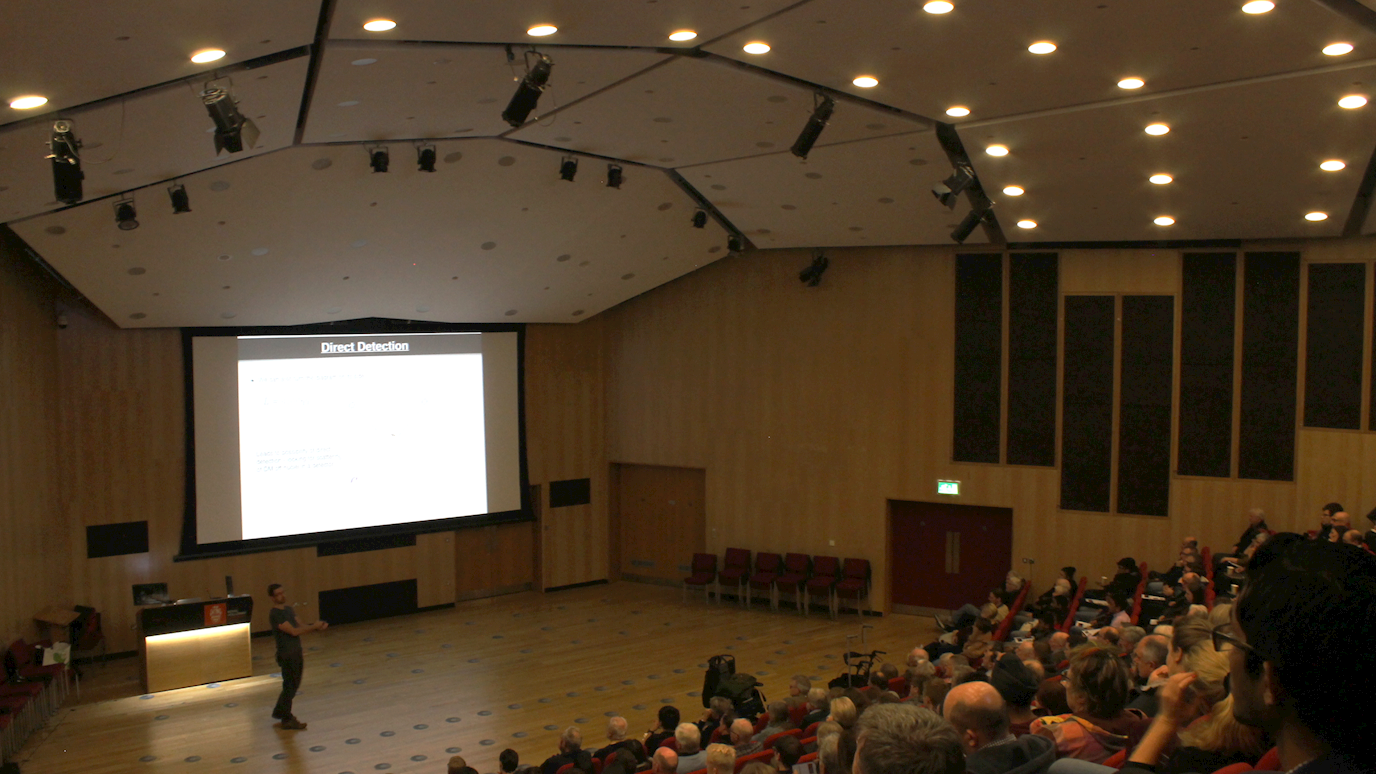
Pumpkin lanterns lit, cupcakes at the ready, we welcomed over 400 guests, keen to learn about the elusive dark matter.
Dr. Stephen West, our head of department and the esteemed speaker of the day, is a theoretical particle physicist, whose research has led him to come up with various ideas for how dark matter behaves, how we could find it and, most importantly, what it is.
So, what do we know so far? Well, we know it almost certainly exists. That’s a good start! It was astronomer Vera Rubin who first saw direct evidence for its existence, when she observed that stars were orbiting galaxies much faster than expected. You would think that stars further out from the galactic core would orbit more slowly, but this was not the case. It was almost like some vast amount of invisible mass was causing the stars to behave as though they were orbiting a much heavier galaxy. In fact, this is exactly what was going on, and the invisible mass was named dark matter!
We also see evidence for dark matter in gravitational lensing, where a massive object curves the very fabric of the universe, space-time, so that light bends around it (take a minute to digest that one)! We observe the bent light, but cannot see what massive object could have caused space-time to curve, so again we turn to our heavy invisible friend: dark matter.
Sometimes, galaxies collide and the dark matter separates out from the normal matter, like it has been filtered out. This is strong evidence for dark matter being a particle. We also know it has mass, but doesn’t interact with light (i.e. is invisible) and, as we have detected structures made from dark matter, we know it moves slowly and must either be stable or extremely long-lived.
So how much dark matter is there? Dr. West took us on a quick trip back to moments after the big bang. When the universe was less than one millionth of a second old, it was a hot, opaque soup of elementary particles. In this soup, dark matter was born. When the soup cooled enough to allow protons to form, it became transparent and light could start to propagate through it. We can still detect this light from the infant universe as the cosmic microwave background (CMB); a kind of radiation that is almost the same in all directions, apart from tiny fluctuations. These fluctuations show where the temperature was slightly different from the average. They were influenced by the dark matter present when the CMB formed and led to structures being created: stars, galaxies, superclusters, all because of tiny differences in temperature caused by dark matter. By plotting the CMB’s power spectrum, we can work out how much dark matter there is compared to normal matter.
It turns out that the universe is only about 5% normal matter and 27% dark matter. The other 68% is dark energy. What’s this dark energy? ‘No idea,’ says Dr. West. Let’s stick with the slightly more comprehensible dark matter!
Considering there is more than five times the amount of dark matter than normal matter, you can see why we are so keen to find out what it is! But how do you build a model to describe dark matter? First, you need an inspired hypothesis that fits with what we have already observed, or, as Dr. West put it, ‘You get to make up all sorts of ideas and give them silly names.’ Personally, he has published papers on FIMPS (feebly interacting massive particles), WIMPonium (long-lived weakly interacting massive particles) and nuclear dark matter, but takes no responsibility for other choice model names, such as ‘WIMPzilla.’ Once a hypothesis has been created, you use it to make predictions and then test these predictions to see whether your hypothesis falls apart. If it does, you tell everyone about it in a paper, so they can learn from where it went wrong, then you take a few deep breaths and start thinking up an even weirder name for your next model. If your dark matter model turns out to be watertight, you tell everyone about it in a paper, drink lots of champagne and probably win a Nobel Prize. So far, no one has managed the latter.
However, there are a few hypotheses that haven’t quite fallen apart yet, so it is possible one of them might turn out to be the answer. Perhaps dark matter can be explained by supersymmetry. This beautiful theory states that standard particles have corresponding supersymmetry (SUSY) particles. Maybe dark matter is made of these SUSY particles. There are also several variations on the theme of WIMP, which stands for ‘weakly interacting massive particle’. This idea relies on dark matter interacting with normal matter through the weak force; the same force that is responsible for radioactive decay.
Whilst theorists like Dr. West are coming up with new ideas for what dark matter could be, experimentalists are going out and actively looking for it. There are three ways to go about searching for dark matter. You can look for it directly by building a big detector, like the time projection chambers in our department. These look for a tiny particle called a quark being scattered when it is hit by a dark matter particle. Alternatively, you try to detect it indirectly by the looking for the particles that are created when two dark matter particles annihilate each other. These particles are a quark and an anti-quark. Your last option, if you don’t want to wait for it to come to you, is to use particle colliders to try and make your own dark matter!
So, what if we do discover what dark matter is? What next? Dr. West tells us that it would help to ‘solve some of fundamental problems in the standard model and create a theory of everything.’ In the Q&A session following the lecture, someone asked if he could see any use for dark matter. Dr. West quipped, ‘I imagine that was also asked about the electron.’ Who knows where dark matter research may take us? It could lead to technological revolutions, a theory of everything, or maybe it will create more questions than it answers! Whatever the future holds, in the words of Dr. West, ‘It’s a very exciting time to be a dark matter physicist.'
Author : Emily Howling
Photography : Francesca Haymes










